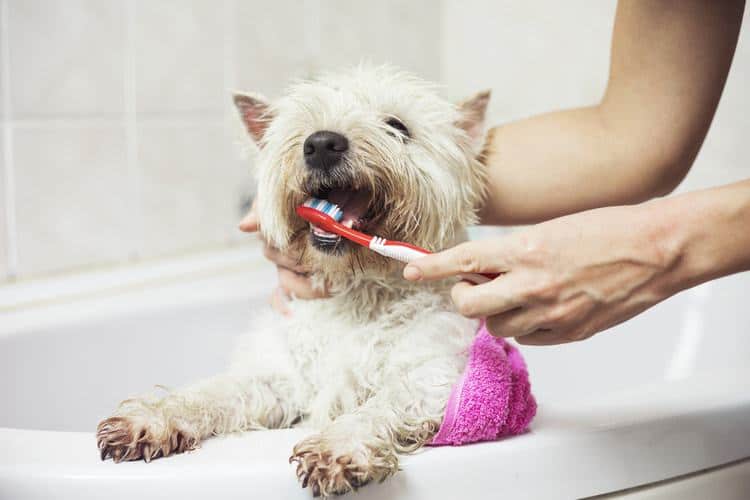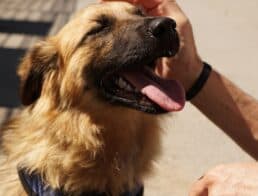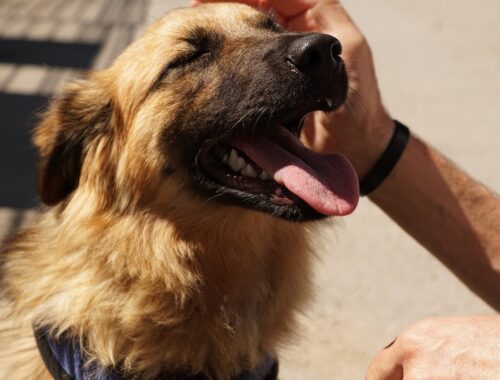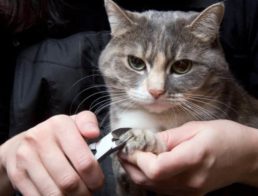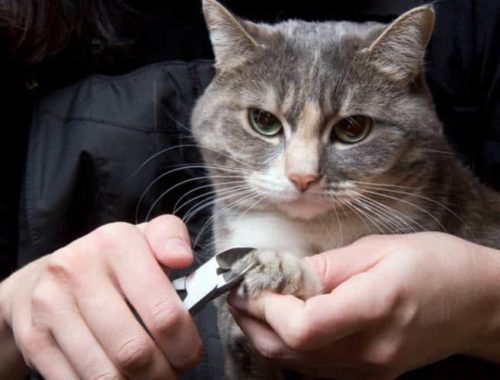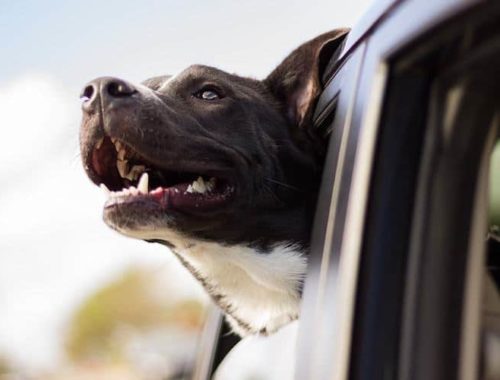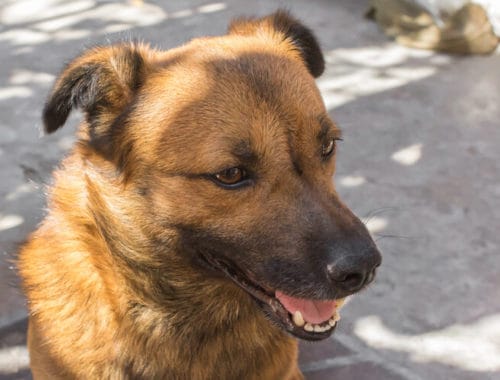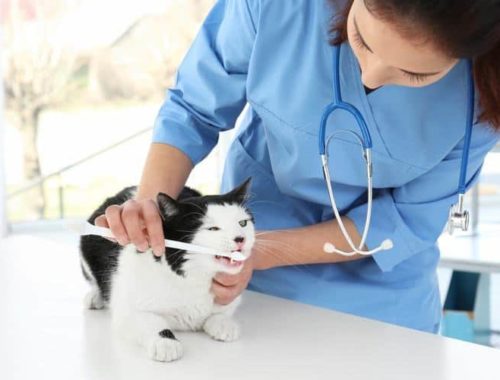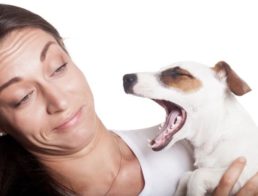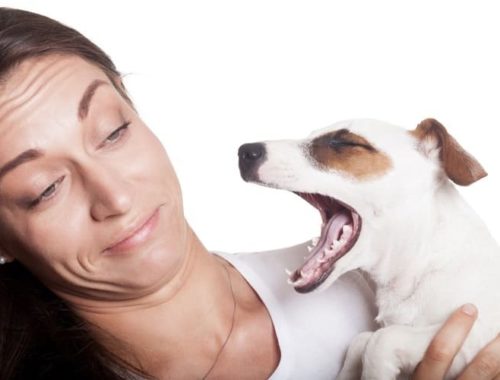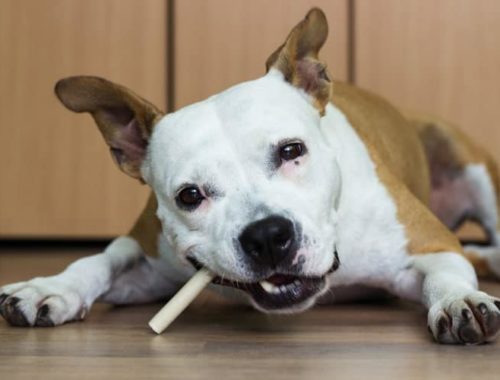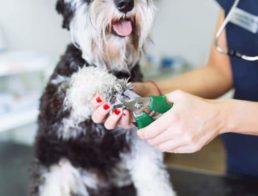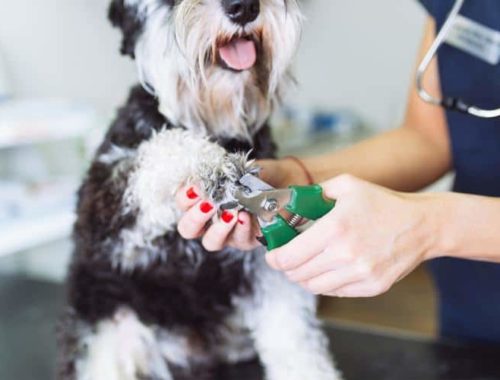If you’re a dog owner, chances are you’ve noticed your dog’s breath isn’t always the freshest. But cleaning your dog’s teeth isn’t just a benefit for your olfactory senses – it’s essential to a dog’s health and well-being. Poor dental hygiene in a dog can lead to gum disease or painful tooth decay and can even cause infection in other parts of the body.
But brushing your dog’s teeth may not be quite as simple as it sounds. Not only do you need to be cognizant of what you use, but you need to accommodate your dog’s needs and behavior, too. Here’s a step-by-step guide to help you brush your dog’s teeth effectively, safely and non-traumatically.
- Purchase The Correct Equipment.
- Introduce Your Dog To The Process.
- Open Your Dog’s Mouth.
- Gently Brush All Of The Cheek-Facing Teeth.
- Reward Your Dog.
- Repeat As Needed.
Step 1: Purchase The Correct Equipment
You’ll need a specialized pet toothpaste for your dog. Never use human toothpaste, or baking soda or salt, as it could be harmful if your dog swallows it. You can buy a variety of flavors of doggy toothpaste, from vanilla mint to poultry or even chicken, so go with what you imagine your dog will like.
Toothbrush-wise, a good rule of thumb is that gentler means better. You can buy specific dog toothbrushes, but if you can’t find one, a child’s toothbrush can work too. If you know your dog to has particularly sensitive teeth or gums, gauze wrapped around a finger could be a good choice instead of a brush. For a very small dog, a finger and gauze will usually be a better fit, too.
Step 2: Introduce Your Dog To The Process
It’s best to attempt to brush your dog’s teeth when they’re feeling chilled out and calm – after a long walk or some exercise is usually a good time. Trying to brush a dog’s teeth when all they want to do is play is typically a recipe for disaster.
A good way to introduce the idea of a tooth-brushing to your dog is to put a small amount of the toothpaste on your finger. Hopefully, they’ll like the taste. Then, when you introduce a toothbrush into the equation, your dog will be at least semi-used to the process, and thus less likely to rebel. It’s also a good idea to start the tooth brushing routine from when your dog is a puppy, for this same reason.
It can also be useful to have a tooth-brushing routine with your dog. For example, if after dinnertime, you consistently sit and brush their teeth, your dog will begin to expect it and get used to it. It’s also a good idea to be aware of your body language. Try sitting on the floor beside your dog, rather than standing over them, which can be perceived as scary or a threat. Although some dogs never quite get to enjoying tooth brushing, steps can be taken to make it as pleasant as possible for them.
Step 3: Open Your Dog’s Mouth
While stroking and talking calmly to your dog, you need to lift their lips to expose their teeth. This can be done using a finger, possibly with some additional tasty toothpaste. If, after a few tries, your dog still isn’t taking to the toothpaste flavor, it’s well worth buying another until you can find one they love.
Step 4: Gently Brush All Of The Cheek-Facing Teeth
Using gentle, circular motions, start buffing the toothpaste into your dogs “cheek facing” teeth. The vast majority of dogs won’t allow you to brush the insides of their teeth, so try to be as thorough as possible with what they’ll allow you to reach. Generally, the insides of a dog’s teeth require less cleaning anyway, thanks to their enthusiastic tongues.
Be sure to reach the canines and back molars, as these are particular magnets for plaque build-up. Around one or two minutes of this brushing should be enough to clean off the majority of plaque.
Step 5: Reward Your Dog
In order for your dog to allow you near their teeth again, you should try some positive reinforcement post-brushing. A favorite activity, long session of stroking, or even a treat will ensure that your dog has positive associations surrounding the tooth brushing experience. This is immensely important, as it’s something they have to get used to.
Step 6: Repeat As Needed
It’s recommended to brush your dog’s teeth every day because that’s the best way to keep on top of plaque build-up. If that time commitment is a little too much for you, every other day should suffice, as it takes plaque around 48 hours to begin calcifying into difficult-to-remove tartar.
After you’ve brushed your dog’s teeth, if you’ve noticed your dog has a chipped tooth consider reading advice from the experts on what to do about a dog with a chipped tooth.


